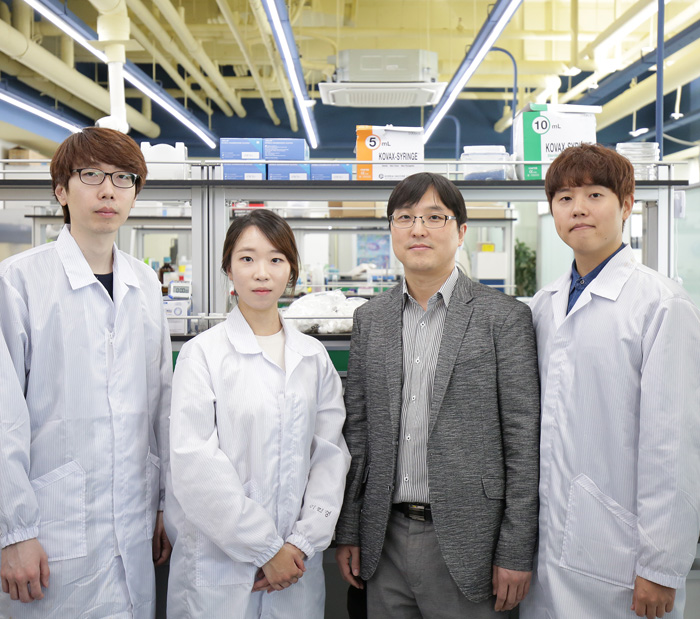Research Stories
Photonic neuromorphic devices: For the light speed cognitive computing
A team of researchers from the Sungkyunkwan University in Suwon, Korea, led by Prof. S. K. PARK and Prof. Y. H. KIM successfully mimic short-term memory/long-term memory, spike-timing dependent plasticity and neural facilitation, which is a major synaptic function for learning and memory, in Advanced Materials.
Advanced Materials Science and Engineering
Prof.
KIM, YONGHOON
The Von Neumann computer only can do well-structured mathematical calculation. The brain, However, can make proper decision under unfamiliar situations based on the past experience and memory consuming 20 Watt so that the brain have been attracting as a biological model to make the energy-efficient cognitive computing system.
Neural cell, which is the building block of the brain transmit the electrical and chemical information through the synapse and its connecting strength is modulated according to the neural activities. This operating principle contributes to a significant role in learning and memory so that the key issue for making brain-like electronics is to emulate behaviors of neurons and synapses.
Recently, a team of researchers from the Sungkyunkwan University in Suwon, Korea, led by Prof. S. K. PARK and Prof. Y. H. KIM successfully mimic short-term memory/long-term memory, spike-timing dependent plasticity and neural facilitation, which is a major synaptic function for learning and memory, in Advanced Materials. These synaptic functions were emulated by using the inherent persistent photoconductivity characteristics of amorphous oxide semiconductors (AOSs).
Prof. KIM et al. not only emulate synaptic functions of the brain, but also explore the dynamics of photo-generated carriers for various AOSs systematically to reveal the underlying mechanisms of the photo-induced carrier generation and relaxation behaviors. They found that the activation energy for the neutralization of ionized oxygen vacancies had a significant influence on the photo-carrier dynamics.
Given that photonic neuromorphic devices opens the door of opportunities for the mimicry of learning and memory function with the ultrafast operating speed and broad bandwidth for applications in cognitive computing system.

